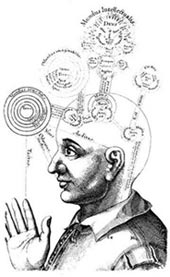| "Kepler´s Heritage in the Space Age" (Conference Announcement) |
|
Johannes Kepler came to Prague as mathematician influenced by Copernicus’ theory and participated in Tycho Brahe’s group in the treatment of Brahe’s very precise measurements of Mars orbit. The tolerant social environment in Rudolfine Prague enabled him to carry out intensely his scientific activities in ideologically broken Europe at the beginning of the 17th century. In the years 1600 – 1609, Kepler worked in Prague on his magnum opus – Astronomia Nova. At the end of 1608, The Emperor provided his last financial support and in the spring of 1609 the Kepler’s tract was published and prepared for distribution at the Frankfurt spring book fair. The work comprised derivation and formulation of the first two laws of planetary motion in the Solar System. Kepler’s work Harmonices Mundi, comprising his third law, was published in Linz ten years later.
Kepler’s results completed the Copernicus' revolution in astronomy, they made fundamentals of astronomy more precise and became starting point of a new development phase of human knowledge concerning whole range of disciplines, as well as the philosophical view of the world. Formulation of Kepler’s laws meant a final breakthrough into the scholastic Aristotelian physics and philosophy. They form not only sources of modern astronomy but also impulses of development of mechanics and its mathematical apparatus. Analytic geometry, differential and integral calculi found here their stimuli, leading eventually to theoretical solution of various technical problems. It was the time of Kepler’s contemporaries – Galileo, Bruno, Brahe, Hagecius – but also of those who were inspired by Kepler’s results – Descartes, Fermat, Desargues, Pascal, Torricelli, Harvey, Newton, Bernoullis, Huygens, Bacon, and many others. With awareness of these historical events, National Technical Museum Prague decided to use genius loci for organizing International Conference in Prague in August 2009, in collaboration with the Charles University in Prague, The Czech Technical University, Academy of Sciences of the Czech Republic (ASCR), Council of the Scientific Societies of the Czech Republic, Astronomical Institute of the ASCR, Institute of Physics of the ASCR, Institute of Geophysics of the ASCR, Institute of Philosophy of the ASCR, Faculty of Mathematics and Physics of the Charles University, Institute of Astronomy of the Charles University, Department of Theoretical Physics and Astrophysics of the Masaryk University in Brno, Czech Astronomical Society, Society for the History of Sciences and Technology, Štefánik Observatory in Prague, Observatory Úpice, and Observatory and Planetarium in České Budějovice. Conference fits well into the project of the International Year of Astronomy, represents contribution of the Czech scientific community and follows the International Astronomical Congress, taking place in Rio de Janeiro in the first half of August 2009. Phenomenon of the scientific revolution of the 17th century still stays in the centre of attention of historians of science and philosophers. The Conference is aimed to gather the latest knowledge on scientific, cultural and social conditions of the origin of Kepler’s laws and on the influence of this development stage of science on further development of the scientific and philosophical thinking. For more details please check the official website of the conference: www.ntm.cz/kepler2009 |






